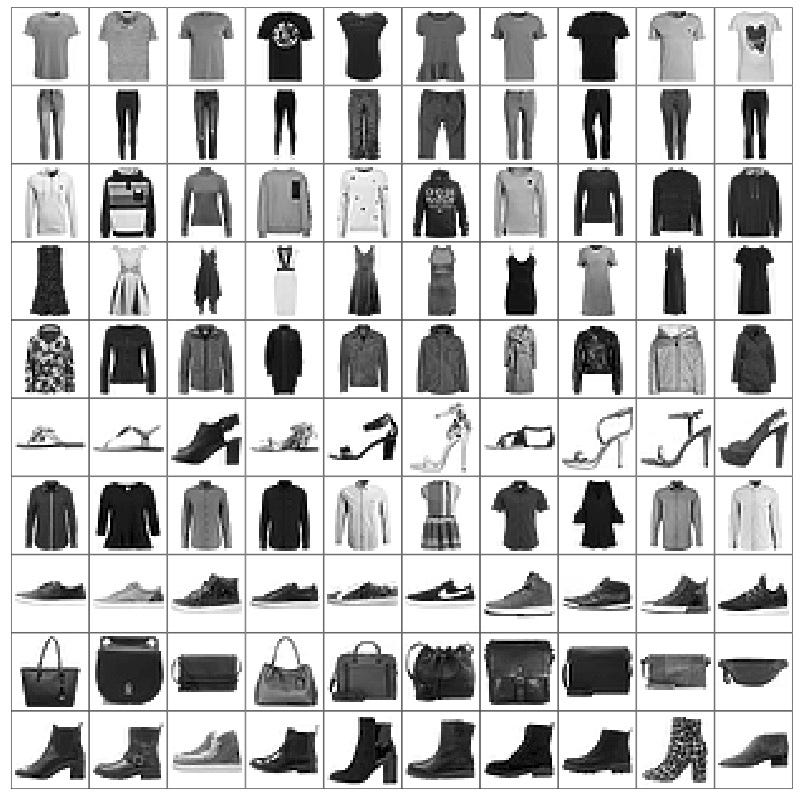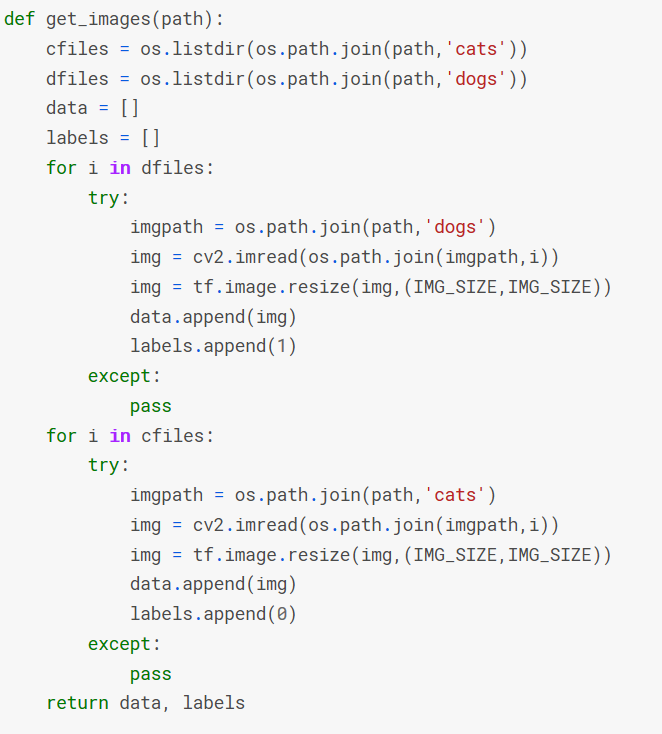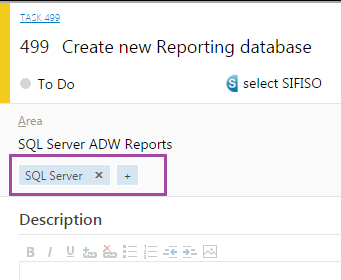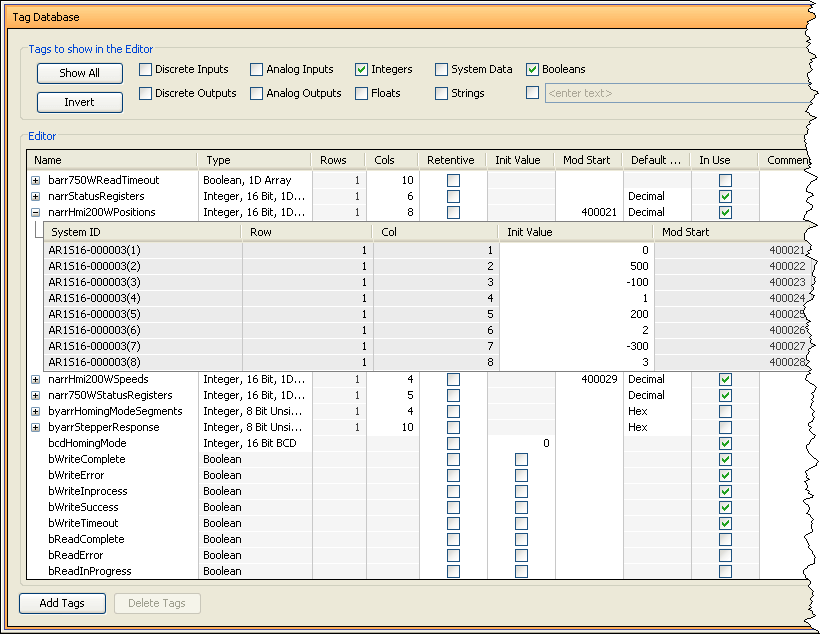39 tf dataset get labels
Tensorflow | tf.data.Dataset.from_tensor_slices() - GeeksforGeeks Syntax : tf.data.Dataset.from_tensor_slices(list) Return : Return the objects of sliced elements. Example #1 : In this example we can see that by using tf.data.Dataset.from_tensor_slices() method, we are able to get the slices of list or array. TensorFlow Datasets By using as_supervised=True, you can get a tuple (features, label) instead for supervised datasets. ds = tfds.load('mnist', split='train', as_supervised=True) ds = ds.take(1) for image, label in ds: # example is (image, label) print(image.shape, label)
TFRecord and tf.train.Example | TensorFlow Core Protocol buffers are a cross-platform, cross-language library for efficient serialization of structured data. Protocol messages are defined by .proto files, these are often the easiest way to understand a message type. The tf.train.Example message (or protobuf) is a flexible message type that represents a {"string": value} mapping.

Tf dataset get labels
Using the tf.data.Dataset | Tensor Examples # create the tf.data.dataset from the existing data dataset = tf.data.dataset.from_tensor_slices( (x_train, y_train)) # by default you 'run out of data', this is why you repeat the dataset and serve data in batches. dataset = dataset.repeat().batch(batch_size) # train for one epoch to verify this works. model = get_and_compile_model() … A hands-on guide to TFRecords - Towards Data Science To get these {image, label} pairs into the TFRecord file, we write a short method, taking an image and its label. Using our helper functions defined above, we create a dictionary to store the shape of our image in the keys height, width, and depth — w e need this information to reconstruct our image later on. TensorFlow | How to use tf.data.Dataset.map() function in TensorFlow Lets normalize the images in dataset using map () method , below are the two steps of this process. def normalize_image(image, label): return tf.cast (image, tf.float32) / 255., label. Apply the normalize_image function to the dataset using map () method. Lets analyze the pixel values in a sample image from the dataset after applying map () method.
Tf dataset get labels. Python-3.X: Set random labels for images in tf.data.Dataset The problem is that using dataset.map runs all operations in graph mode and random numbers generated by numpy are not tracked by tensorflow and are therefore deterministic. Random tensorflow tensors, on the other hand, will be tracked. So try something like this: import tensorflow as tf images = tf.random.normal((50, 128, 128, 3)) dataset = tf.data.Dataset.from_tensor_slices((images)) dataset ... How to convert my tf.data.dataset into image and label arrays #2499 A tf.data dataset. Should return a tuple of either (inputs, targets) or (inputs, targets, sample_weights). A generator or keras.utils.Sequence returning (inputs, targets) or (inputs, targets, sample_weights). A more detailed description of unpacking behavior for iterator types (Dataset, generator, Sequence) is given below. How to filter the dataset to get images from a specific class ... - GitHub Is it possible to make predicate function more generic, so that I can keep N number of classes and filter out the rest of the classes? or is there any other way to filter the dataset to get images from a specific class? Environment information. Operating System: Distribution: Anaconda; Python version: <3.7.7> Tensorflow 2.1; tensorflow_datasets ... Data preprocessing using tf.keras.utils.image_dataset_from ... - Value ML Let's say we have images of different kinds of skin cancer inside our train directory. We want to load these images using tf.keras.utils.images_dataset_from_directory () and we want to use 80% images for training purposes and the rest 20% for validation purposes. We define batch size as 32 and images size as 224*244 pixels,seed=123.
tf.data.Dataset select files with labels filter Code Example Python answers related to "tf.data.Dataset select files with labels filter" python load pandas from pickle pandas save file to pickle python yaml load_all extract label from tf data select features and label from df cant access a dataframe imported using pickle pickle load data filter pandas dataframe pd.select python filter dataframe How to filter Tensorflow dataset by class/label? - Kaggle Hey @bopengiowa, to filter the dataset based on class labels we need to return the labels along with the image (as tuples) in the parse_tfrecord() function. Once that is done, we could filter the required classes using the filter method of tf.data.Dataset. Finally we could drop the labels to obtain just the images, like so: Predict cluster labels spots using Tensorflow - Read the Docs We create a vector of our labels with which to train the classifier. In this case, we will train a classifier to predict cluster labels obtained from gene expression. We'll create a one-hot encoded array with the convenient function tf.one_hot. Furthermore, we'll split the vector indices to get a train and test set. Multi-Label Image Classification in TensorFlow 2.0 - Medium model.compile(optimizer=tf.keras.optimizers.Adam(learning_rate=LR), loss=macro_soft_f1, metrics=[macro_f1]) Now, you can pass the training dataset of (features, labels) to fit the model and indicate a seperate dataset for validation. The performance on the validation set will be measured after each epoch.
How to solve Multi-Label Classification Problems in Deep ... - Medium time: 7.8 s (started: 2021-01-06 09:30:04 +00:00) Notice that above, the True (Actual) Labels are encoded with Multi-hot vectors Prepare the data pipeline by setting batch size & buffer size using ... Multi-label Text Classification with Tensorflow - Vict0rsch The labels won't require padding as they are already a consistent 2D array in the text file which will be converted to a 2D Tensor. But Tensorflow does not know it won't need to pad the labels, so we still need to specify the padded_shape argument: if need be, the Dataset should pad each sample with a 1D Tensor (hence tf.TensorShape ( [None ... How to use Dataset in TensorFlow - Medium dataset = tf.data.Dataset.from_tensor_slices (x) We can also pass more than one numpy array, one classic example is when we have a couple of data divided into features and labels features, labels = (np.random.sample ( (100,2)), np.random.sample ( (100,1))) dataset = tf.data.Dataset.from_tensor_slices ( (features,labels)) From tensors Custom training with tf.distribute.Strategy | TensorFlow Core Download the Fashion MNIST dataset fashion_mnist = tf.keras.datasets.fashion_mnist (train_images, train_labels), (test_images, test_labels) = fashion_mnist.load_data() # Add a dimension to the array -> new shape == (28, 28, 1) # This is done because the first layer in our model is a convolutional
tf.data: Build Efficient TensorFlow Input Pipelines for Image Datasets 3. Build Image File List Dataset. Now we can gather the image file names and paths by traversing the images/ folders. There are two options to load file list from image directory using tf.data ...
tfds.features.ClassLabel | TensorFlow Datasets get_tensor_info. View source. get_tensor_info() -> tfds.features.TensorInfo. See base class for details. get_tensor_spec. View source. get_tensor_spec() -> TreeDict[tf.TensorSpec] Returns the tf.TensorSpec of this feature (not the element spec!). Note that the output of this method may not correspond to the element spec of the dataset.

python - TF version : 2.4.1, TypeError: Input 'filename' of 'ReadFile' Op has type float32 that ...
Datasets - TF Semantic Segmentation Documentation dataset/ labels.txt test/ images/ masks/ train/ images/ masks/ val/ images/ masks/ or use dataset/ labels.txt images/ masks/ The labels.txt should contain a list of labels separated by newline [/n]. For instance it looks like this: background car pedestrian Create TFRecord
Images with directories as labels for Tensorflow data This will give us a dataset of strings for our file paths and we could then make use of tf.read_file and tf.image.decode_jpeg to map in the actual image. The downsides of this is reading in the actual label. The string is a tensor and so I found it cumbersome to do path manipulation and get the folder name and map that to an integer label.
How to get the labels from tensorflow dataset - Stack Overflow Teams. Q&A for work. Connect and share knowledge within a single location that is structured and easy to search. Learn more
tf.data: Build TensorFlow input pipelines | TensorFlow Core The tf.data API enables you to build complex input pipelines from simple, reusable pieces. For example, the pipeline for an image model might aggregate data from files in a distributed file system, apply random perturbations to each image, and merge randomly selected images into a batch for training.
tensorflow tutorial begins - dataset: get to know tf.data quickly def train_input_fn( features, labels, batch_size): """An input function for training""" # Converts the input value to a dataset. dataset = tf. data. Dataset. from_tensor_slices ((dict( features), labels)) # Mixed, repeated, batch samples. dataset = dataset. shuffle (1000). repeat (). batch ( batch_size) # Return data set return dataset
Keras tensorflow : Get predictions and their associated ground ... - GitHub I am new to Tensorflow and Keras so the answer is perhaps simple, but I have a batched and prefetched tensorflow dataset (of type tf.data.TFRecordDataset) which consists in images and their label (int type) , and I apply a classification model on it.
TensorFlow | How to use tf.data.Dataset.map() function in TensorFlow Lets normalize the images in dataset using map () method , below are the two steps of this process. def normalize_image(image, label): return tf.cast (image, tf.float32) / 255., label. Apply the normalize_image function to the dataset using map () method. Lets analyze the pixel values in a sample image from the dataset after applying map () method.
A hands-on guide to TFRecords - Towards Data Science To get these {image, label} pairs into the TFRecord file, we write a short method, taking an image and its label. Using our helper functions defined above, we create a dictionary to store the shape of our image in the keys height, width, and depth — w e need this information to reconstruct our image later on.
Using the tf.data.Dataset | Tensor Examples # create the tf.data.dataset from the existing data dataset = tf.data.dataset.from_tensor_slices( (x_train, y_train)) # by default you 'run out of data', this is why you repeat the dataset and serve data in batches. dataset = dataset.repeat().batch(batch_size) # train for one epoch to verify this works. model = get_and_compile_model() …









![[러닝 텐서플로]Chap04 - 합성곱 신경망 CNN](https://t1.daumcdn.net/cfile/tistory/99DAA3405B1AC44D0C)

![How to load a custom dataset with tf.data [Tensorflow] - YouTube](https://i.ytimg.com/vi/bqeUmLCgsVw/maxresdefault.jpg)
Post a Comment for "39 tf dataset get labels"